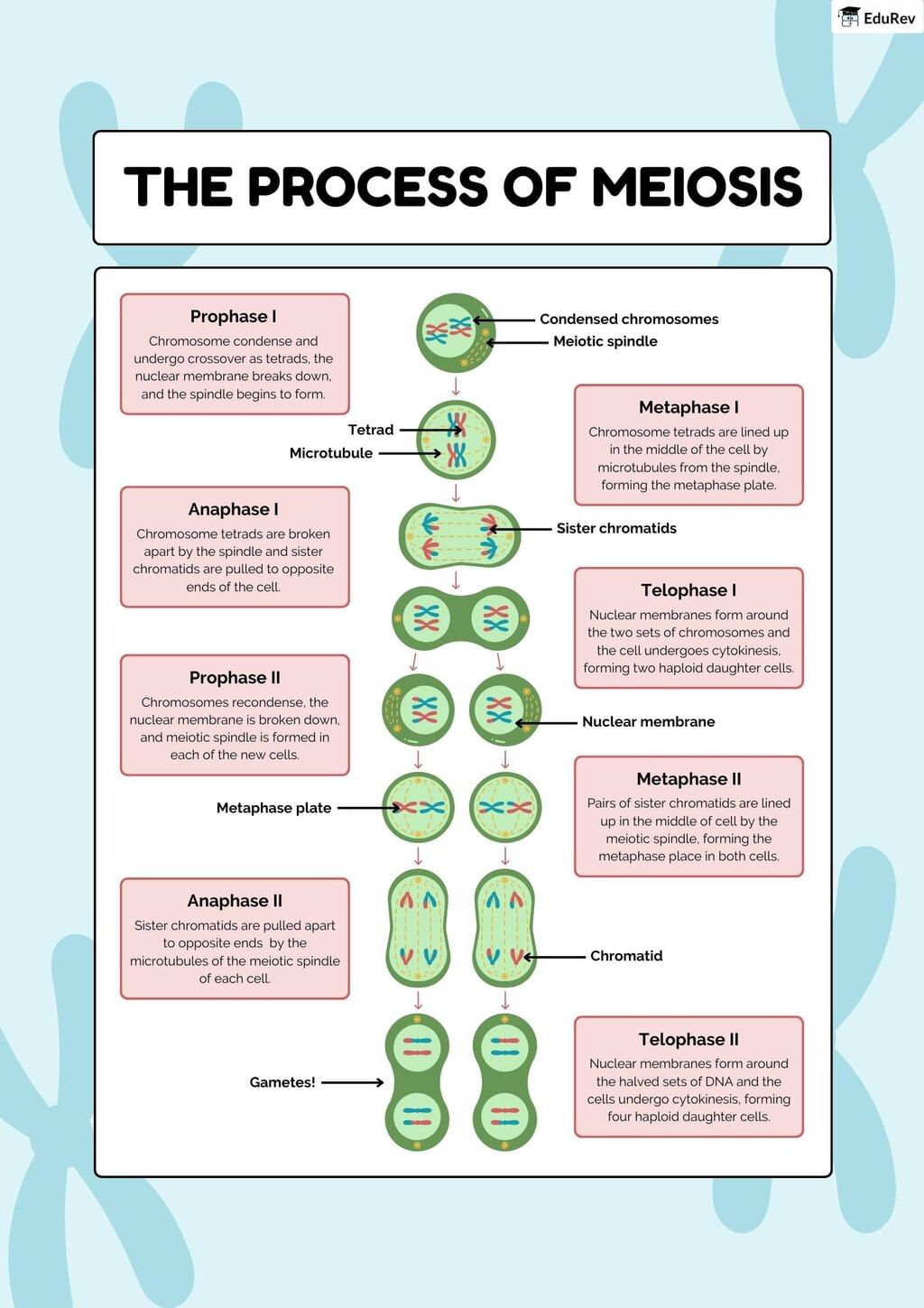NEET Exam > NEET Notes > Biology Class 11 > Infographics: Process of Meiosis
Infographics: Process of Meiosis | Biology Class 11 - NEET PDF Download

The document Infographics: Process of Meiosis | Biology Class 11 - NEET is a part of the NEET Course Biology Class 11.
All you need of NEET at this link: NEET
|
150 videos|398 docs|136 tests
|
FAQs on Infographics: Process of Meiosis - Biology Class 11 - NEET
| 1. What is meiosis and why is it important in sexual reproduction? |  |
Ans. Meiosis is a specialized type of cell division that occurs in sexually reproducing organisms. It reduces the chromosome number by half, resulting in the formation of four genetically diverse gametes (sperm or eggs) from a single diploid cell. This process is essential for maintaining the species' chromosome number across generations and contributes to genetic diversity through recombination and independent assortment of chromosomes.
| 2. What are the main stages of meiosis and how do they differ from mitosis? |  |
Ans. Meiosis consists of two main stages: meiosis I and meiosis II. In meiosis I, homologous chromosomes segregate, leading to a reduction in chromosome number, while in meiosis II, sister chromatids separate, similar to mitosis. The key difference is that meiosis includes two rounds of division and results in four haploid cells, whereas mitosis results in two diploid cells, maintaining the original chromosome number.
| 3. What is crossing over and during which stage of meiosis does it occur? |  |
Ans. Crossing over is the exchange of genetic material between homologous chromosomes, which occurs during prophase I of meiosis. This process increases genetic variation by producing new combinations of alleles, which is crucial for evolution and adaptation in populations.
| 4. How does independent assortment contribute to genetic variation? |  |
Ans. Independent assortment refers to the random distribution of maternal and paternal chromosomes into gametes during meiosis. This occurs during metaphase I, where different pairs of chromosomes align independently of each other. As a result, the combination of chromosomes that ends up in each gamete varies, contributing significantly to genetic diversity in the offspring.
| 5. What are the potential consequences of errors in meiosis? |  |
Ans. Errors in meiosis can lead to various genetic disorders and conditions, such as aneuploidy, where gametes have an abnormal number of chromosomes. This can result in conditions like Down syndrome (trisomy 21) or Turner syndrome (monosomy X). Such errors can arise from nondisjunction, where chromosomes fail to separate properly during meiosis.
Related Searches
















